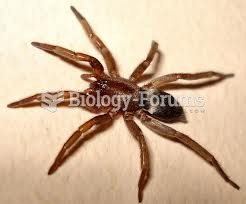Answer to Question 1
The mouse has a pointed nose and a split upper lip. Mice have four toes on their forefeet and five toes on their
hind feet.
The house mouse is approximately two and a half to three and a half inches long, excluding the tail; the
tail is generally the same length as the body. This small mammal will weigh one-half to one ounce. The house
mouse has a small head and a long, narrow snout. Several long, thin whiskers are used by the animal to help it
find its way about in dark, tight areas. The fur of the house mouse is grayish-brown on the animals back and
lighter colored to white on the underside.
The eyes of the house mouse are fairly large, round, and black; it cannot see very well. Because of the large,
spherical shape of the eye, mice have an almost prefect visual field, but because of the position of the eyes on
the side of the head and the shape of the eye, they are incapable of detailed vision. Mice can detect movement
but may be unable to determine what the movement is. Cats, in their pursuit of a mouse, move ever so slowly
and may remain motionless for long periods.
Mice have fairly large ears and possess a highly developed sense of hearing. They perceive sounds in very
high-frequency ranges, up to 100,000 Hz.
Smell is the most highly developed sense that mice possess. Mice use smell for locating food, identifying
family and colony members, finding their way around in darkness, and identifying enemies.
Mice are primarily nocturnal in habit and will usually seek hiding places during the day, but pet mice, feeling
safe around humans, may come out during the day. Pet mice can recognize by smell those who feed and
handle them, and will feel at ease in their presence.
Answer to Question 2
In ancient Rome and during the Middle Ages, mice were used as medicine against all kinds of diseases. They
were dried, pulverized, sliced, or marinated in oils, and then used as a compress or taken internally. Their
blood was a favored ingredient of drugs and tonics. Mice were supposedly good for flesh wounds, snakebites,
warts, bladder irregularities, diabetes, enlarged thyroid glands, diseases of the eye, and loss of hair.







